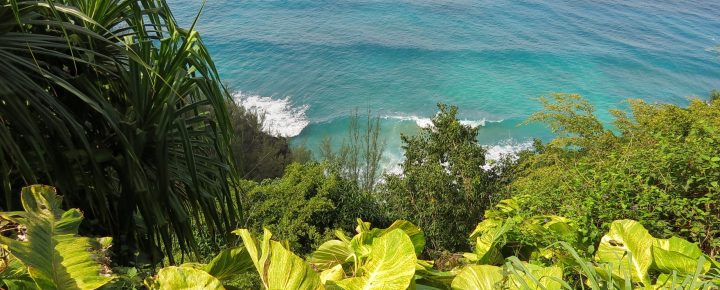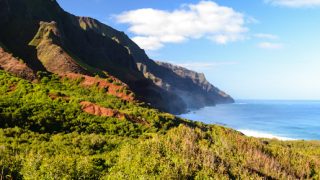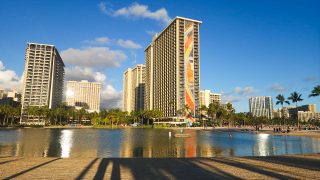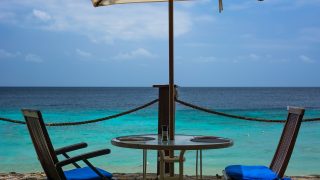The Hawaii Department of Health (DOH) has confirmed norovirus as the cause of the recent gastrointestinal illness outbreak at Kalalau Trail’s camping area in the Napali Coast State Wilderness Park. Since mid-August, dozens of hikers have reported experiencing symptoms like nausea, vomiting, and diarrhea after visiting the area. Lab tests from four individuals have confirmed norovirus, a highly contagious virus that spreads quickly through contaminated food, water, and surfaces, raising concerns about how such contamination occurred in this remote wilderness.
How did this situation become so bad on one of the world’s most popular hikes? The state’s don’t fix it, lock it up attitude isn’t the solution needed. We have some answers now and information from Coconut Wireless to share with you.
Details from the scene at remote Kalalau beach.
The Department of Land and Natural Resources (DLNR) closed the section of Kalalau Trail beyond Hanakapiai Valley on September 3, 2024, for at least seven days to address the outbreak. During this closure, environmental sampling is underway to assess the extent of the contamination and ensure the area is safe for future hikers.
Reports from those on the trail indicate that unsanitary conditions, compounded by limited and inaccessible restroom facilities, may have worsened the virus’s spread in this remote wilderness setting.
Due to the severity of their symptoms, some hikers who fell ill had to be airlifted from the trail by emergency helicopter services. One hiker was taken to Kauai Veterans Memorial Hospital after becoming sick, potentially from drinking untreated water there. This highlights the dangers of consuming natural water sources in remote settings. However, others have reported that water sources may not be the cause, as some affected individuals did not drink the local water at all, raising further questions about the virus’s transmission in the area.
The nature of Norovirus in remote locations.
Norovirus is a fast-acting, highly contagious virus that causes acute gastrointestinal symptoms like vomiting, diarrhea, and stomach cramps. The virus can spread quickly in remote locations like Kalalau due to the lack of sanitation and hygiene facilities. It is resilient, surviving on surfaces and in soil and even becoming airborne through vomiting, which makes containment difficult. Controlling norovirus becomes even more complex in environments where resources are limited, and hygiene is challenging, especially when visitors rely on untreated natural water sources or shared facilities.
Coconut Wireless community feedback and concerns.
Unverified reports suggest that the number of people affected by the outbreak may be significantly higher than the initial confirmed cases, with some estimates nearing 50. Hikers have expressed frustration with the lack of sanitation facilities and the immense physical toll of navigating the trail while sick. Concerns are mounting about how quickly the virus spread, the limited options for proper hygiene, and the difficulty of receiving timely medical help in such a remote location.
Hikers have told us the compost toilets along the trail are in bad shape. The campground has only one toilet, and the state often locks it up during the busy summer months. Two other toilets are located 1/4 mile away at the east end, where people usually do not camp. Because of this, you are dealing with contaminated soil around the campground where disease can spread.
The closure notice of the Kalalau trail.
The trail closure will remain in effect until the area is deemed safe, though it is unclear if the initial seven-day period will be enough. Officials will monitor the situation and may extend the closure depending on test results. Recent visitors to Kalalau are advised to monitor themselves for symptoms and seek medical care if needed. The DLNR is contacting affected permit holders to provide refunds or options for rescheduling their visit.
The importance of hygiene, plus future efforts.
As the investigation continues, park officials stress the importance of proper hygiene practices to prevent future outbreaks. Treating water before drinking, avoiding contact with potentially contaminated surfaces, and adhering to wilderness guidelines are crucial in remote areas like Kalalau. Ongoing state mitigation efforts, including enhanced sanitation protocols, will likely follow, along with updated guidance specific to the Kalalau Trail area. Further updates are expected as environmental tests conclude, and more detailed information becomes available.
Get Breaking Hawaii Travel News







I camped five nights in Kalalau most recently last September 2023. I knew what I was getting into. The bathroom situation seemed about the same as when I first hiked in 2012, except the one toilet near the camping area was locked. I always hated how a line would form there when you’re trying to do your business, anyway, but the two newer toilets are far away. Only 1/4 mile? It feels more like a mile, especially at night.
I always walked to those two toilets on the east end when I was last there, but saw many people who wouldn’t, especially women at night. They would just pop out of their tent, squat, and go. I never go near my campsite and don’t understand why anyone would.
What is the status of contract negotiations/and strike possibilities now and in the near future. Deciding whether to continue our vacation plans???
FYI – we’re on island now and just received an email saying that our park and ride shuttle reservation to the north shore has been canceled due to the Kalalau trail closure. The shuttle service has been suspended Sept 7-18. Disappointing – we were looking forward to visiting Ke’e Beach for swimming and snorkeling. But best to be safe, I guess.
I believe there was a similar outbreak at the Havasupai reservation at the grand canyon recently…
Two weeks to flatten the curve should do.
I think more people suffer from Emptywalletitis. Enough said.
I think that is a close cousin of the’suckthetouristdry’ virus, which oddly enough, the state is not trying to eradicate, but has actually been caught “seeding” said virus at island hotels, golf courses, and restaurants. The CDC has declared the whole state infested, and is considering advising visitors to go somewhere else.
The current theory is that the virus leaked from the HTA Lab in Wuhanaloha.